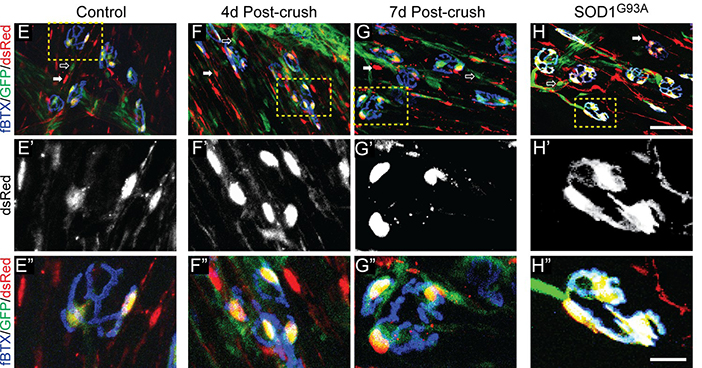Center for Translational Neuroscience researchers devise ‘bar code’ method to identify Schwann cells.
While the brain is composed of two types of cells, glia tend to receive far less attention for their importance in brain function and disease than the more celebrated neurons. But scientists have known for more than a century that special types of glial cells are integral components of neuromuscular junctions or synapses—points of contact between neurons and muscles that permit the brain to control movement.
Despite the significance of glial cells for the proper formation, maintenance, and repair of synapses throughout the nervous system, the inability to distinguish specific glial cells at synapses from the diverse overall population of glial cells has been a major challenge in promoting and restoring the normal function of the nervous system following injuries and diseases and in old age.
A new discovery, detailed in a June 25 study in the journal eLife, may change that.
A team led by Gregorio Valdez, PhD, an associate professor of molecular biology, cell biology, and biochemistry, has identified important molecules to study and to manipulate the specific glial cells integral to synapses.
“This discovery will serve as a springboard to addressing fundamental questions and developing assays to speed the discovery of therapeutics intended to preserve and restore the normal function of neuronal circuits,” says Valdez, who is affiliated with the new Center for Translational Neuroscience, established by the Carney Institute for Brain Science and the Brown Institute for Translational Science.
The study reveals that an important subtype of glia, known as Schwann cells and located at neuromuscular synapses, are the only cells in muscles expressing two specific molecules. These molecular markers provide a highly specific glial “bar code,” Valdez says, that identifies the vital cell subtype.
“What this means is that we can finally figure out how all three cellular constituents of the synapse—neurons, muscle, and glia—talk to each other,” he says. “We now have a unique and important tool for identifying this critical component of the synapse. This is essential for knowing when and where to target to ensure synapses function appropriately.”
Continue reading here.




